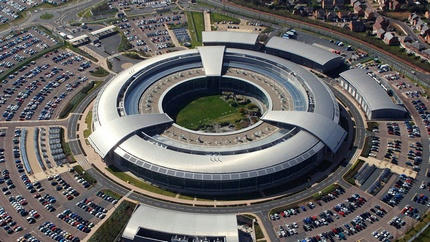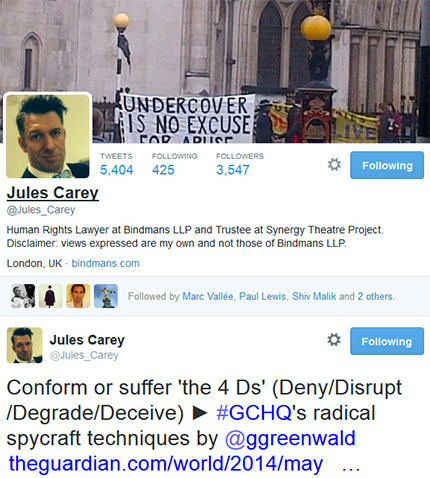This Church and State blog has been decimated and I have no access to the TinyPic website (WITH UPDATE - DAY 4 7/11/2016)

UK Government Communications Headquarters (GCHQ)
The image I posted here has been vandalized/removed but appears in the update to this blog post below.
In this Church and State blog, we have found links broken and posts vandalised. This afternoon all the images in the blog that I have with TinyPic are missing, which means the entire blog has been decimated. Even the sidebar image I had for my previous disclaimer has been taken out. I have also been denied access to the TinyPic website, so this afternoon I emailed them instead:
4 November 2016
Dear TinyPic,
I cannot access the TinyPic website on any of my three laptops and all the images on my blog are not appearing either.
When I go to http://tinypic.com/ all I get is "XML Parsing Error: unexpected parser state". This is a screenshot of what my browsers get when I try to access your site: http://prntscr.com/d31aih (also attached).
And this is a screenshot showing my decimated blog: http://prntscr.com/d31jf9 (also attached).
Please can you resolve this situation.
Sincerely,
Lola Heavey
Dear TinyPic,
I cannot access the TinyPic website on any of my three laptops and all the images on my blog are not appearing either.
When I go to http://tinypic.com/ all I get is "XML Parsing Error: unexpected parser state". This is a screenshot of what my browsers get when I try to access your site: http://prntscr.com/d31aih (also attached).
And this is a screenshot showing my decimated blog: http://prntscr.com/d31jf9 (also attached).
Please can you resolve this situation.
Sincerely,
Lola Heavey
UPDATE 7 November (9.06am): I have not received a reply from TinyPic (Day 4). The images I have with them are back but the second image I had in this blog post has been subsequently vandalized/removed. This is that image, now saved to a memory stick, which shows what my previous disclaimer looked like when it appeared below the photo of GCHQ above:

RE: Government Communications Headquarters (GCHQ)
Paragraph 12 of Declan's updated complaint to the United Nations under Article 19 (freedom of expression) of the International Covenant on Civil and Political Rights.
12. It is important to underscore that the discriminatory surveillance suffered by the Applicant and his wife is not an isolated event. Rather, it is emblematic of a larger pattern of surveillance by law enforcement officials in the UK that has been well-documented by international and domestic human rights bodies. For example, GCHQ's Joint Threat Research Intelligence Group (JTRIG) specialises in the “4 D's”: deny, disrupt, degrade, deceive. It has been branded by the press as the spy agency's “deception unit”. Though its existence was secret until 2014, JTRIG has developed a distinctive profile in the public understanding, after documents from NSA whistleblower Edward Snowden revealed that the unit had engaged in “dirty tricks” like deploying sexual “honey traps” designed to discredit targets, launching denial-of-service attacks to shut down Internet chat rooms, pushing veiled propaganda onto social networks and generally warping discourse online. Previous reporting on GCHQ established its focus on what it regards as political radicalism. Beyond JTRIG's targeting of Anonymous, other parts of GCHQ targeted political activists and groups deemed to be “radical”, even monitoring human rights NGOs. Simon Davies, founder of the London-based Privacy International, asks: “If spying on human rights NGOs isn't off limits for GCHQ, then what is?”
Paragraph 12 of Declan's updated complaint to the United Nations under Article 19 (freedom of expression) of the International Covenant on Civil and Political Rights.
12. It is important to underscore that the discriminatory surveillance suffered by the Applicant and his wife is not an isolated event. Rather, it is emblematic of a larger pattern of surveillance by law enforcement officials in the UK that has been well-documented by international and domestic human rights bodies. For example, GCHQ's Joint Threat Research Intelligence Group (JTRIG) specialises in the “4 D's”: deny, disrupt, degrade, deceive. It has been branded by the press as the spy agency's “deception unit”. Though its existence was secret until 2014, JTRIG has developed a distinctive profile in the public understanding, after documents from NSA whistleblower Edward Snowden revealed that the unit had engaged in “dirty tricks” like deploying sexual “honey traps” designed to discredit targets, launching denial-of-service attacks to shut down Internet chat rooms, pushing veiled propaganda onto social networks and generally warping discourse online. Previous reporting on GCHQ established its focus on what it regards as political radicalism. Beyond JTRIG's targeting of Anonymous, other parts of GCHQ targeted political activists and groups deemed to be “radical”, even monitoring human rights NGOs. Simon Davies, founder of the London-based Privacy International, asks: “If spying on human rights NGOs isn't off limits for GCHQ, then what is?”

'Let me recommend an important web site churchandstate.org.uk. Operating out of London this well-designed and exciting web site covers church-state, population, climate change and other issues. Check it out.' Edd Doerr, President, Americans for Religious Liberty
http://churchandstate.org.uk/about/

